
Transgenic Mouse Clinic for Ageing Research
The mouse is one of the most useful animal models to study the biological function of proteins in living organisms. The mouse model is an established animal model to increase our knowledge on the pathophysiology of human diseases and to develop or improve treatment of these diseases. Many researchers at the UMCG are using transgenic mice to answer their research questions. To improve our sources for fundamental and biomedical research at the UMCG, we started a state-of-the-art mouse facility that will generate innovative mouse models. All techniques (recombineering, CRISPR/Cas9, ES cell culture, zygote injection) and equipment involved in the generation of new mouse models have been in implemented in our laboratory or in the animal facility (CDP Groningen).
We generate conditional knock-out (KO) mice by homologous recombination in embryonic stem (ES) cells followed by injection into blastocysts to create chimeric mice. In addition, full KO or knock-in (KI) mice can be generated by CRISPR/Cas9 technology. Transgenic mice expressing “new” proteins or protein variants can be made by different techniques, including microinjection of DNA into the pronuclei of fertilized eggs or by electroporation of ES cells followed by selection, injection into blastocysts to create eventually chimeric mice. Recently, we are using CRISPR/Cas9 technology to edit genes in somatic cells, for example in hepatocytes of living mice. UMCG Research
Team:
- Dr. Bart van de Sluis (Project leader)
- Nicolette Huijkman (Technician: molecular techniques, ES cell culture)
- Marieke Smit (Technician: mouse handeling, microinjection)
- Niels Kloosterhuis (Technician: mouse handeling, microinjection)
Published genetically engineered mouse models (GEMMs)
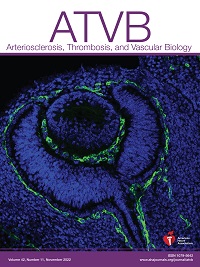
Dyonne Y Vos, Melinde Wijers, Marieke Smit, Nicolette Huijkman, Niels J Kloosterhuis , Justina C Wolters, Joël J Tissink , Amanda C M Pronk, Sander Kooijman , Patrick C N Rensen , Jan Albert Kuivenhoven , Bart van de Sluis Cargo-Specific Role for Retriever Subunit VPS26C in Hepatocyte Lipoprotein Receptor Recycling to Control Postprandial Triglyceride-Rich Lipoproteins Affiliations expand PMID: 36353989 DOI: 10.1161/ATVBAHA.122.318169 [Pubmed]
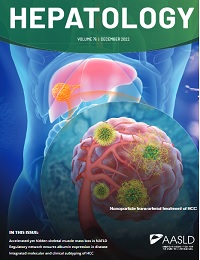
van Zwol W, Rimbert A, Wolters JC, Smit M, Bloks VW, Kloosterhuis NJ, Huijkman NCA, Koster MH, Tharehalli U, de Neck SM, Bournez C, Fuh MM, Kuipers J, Rajan S, de Bruin A, Ginsberg HN, van Westen GJP, Hussain MM, Scheja L, Heeren J, Zimmerman P, van de Sluis B, Kuivenhoven JA. Loss of hepatic SMLR1 causes hepatosteatosis and protects against atherosclerosis due to decreased hepatic VLDL secretion. Hepatology. 2022 Sep 2. doi: 10.1002/hep.32709. [Pubmed]
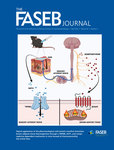
D. Nakladal,S. P. H. Lambooy,S. Mišúth,D. Čepcová,C. P. Joschko,A. van Buiten,M. Goris,F. Hoogstra-Berends,N. J. Kloosterhuis,N. Huijkman,B. van de Sluis,G. F. Diercks,J. H. Buikema,R. H. Henning,L. E. Deelman. Homozygous whole body Cbs knockout in adult mice features minimal pathology during ageing despite severe homocysteinemiaFirst published: 22 March 2022 https://doi.org/10.1096/fj.202101550R [Pubmed]
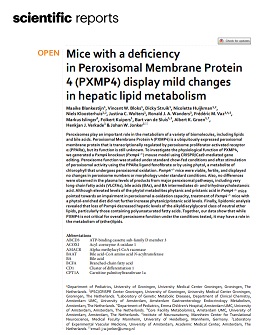
Blankestijn M, Bloks VW, Struik D, Huijkman N, Kloosterhuis N, Wolters JC, Wanders RJA, Vaz FM, Islinger M, Kuipers F, van de Sluis B, Groen AK, Verkade HJ, Jonker JW. Mice with a deficiency in Peroxisomal Membrane Protein 4 (PXMP4) display mild changes in hepatic lipid metabolism. Sci Rep. 2022 Feb 15;12(1):2512. doi: 10.1038/s41598-022-06479-y. [Pubmed]
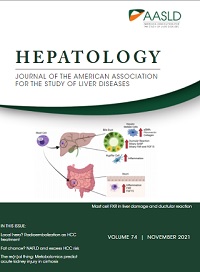
Rutten MGS, Derks TGJ, Huijkman NCA, Bos T, Kloosterhuis NJ, van de Kolk KCWA, Wolters JC, Koster MH, Bongiovanni L, Thomas RE, de Bruin A, van de Sluis B, Oosterveer MH. Modeling Phenotypic Heterogeneity of Glycogen Storage Disease Type 1a Liver Disease in Mice by Somatic CRISPR/CRISPR-associated protein 9-Mediated Gene Editing. Hepatology. 2021 Nov;74(5):2491-2507. doi: 10.1002/hep.32022. [Pubmed]

JF. de Boer, H.D. de Vries, A. Palmiotti, R. Li, M. Doestzada, J.A. Hoogerland, J. Fu, A.M. La Rose, M. Westerterp, N.L. Mulder, M.V. Hovingh, M. Koehorst, N.J. Kloosterhuis, J.C. Wolters, V.W. Bloks, J.T. Haas, D. Dombrowicz, B. Staels, B. van de Sluis, F. Kuipers. Cholangiopathy and biliary fibrosis in Cyp2c70-deficient mice are fully reversed by ursodeoxycholic acid. CMGH 2020 Dec 11 doi.org/10.1016/j.jcmgh.2020.12.004 [Pubmed]
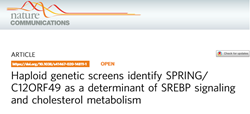
Loregger A, Raaben M, Nieuwenhuis J, Tan JME, Jae LT, van den Hengel LG, Hendrix S, van den Berg M, Scheij S, Song JY, Huijbers IJ, Kroese LJ, Ottenhoff R, van Weeghel M, van de Sluis B, Brummelkamp T, Zelcer N. Nat Commun. 2020 Feb 28;11(1):1128. doi: 10.1038/s41467-020-14811-1 [PubMed]
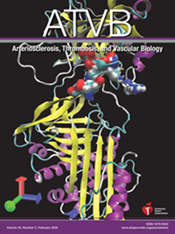
Loaiza N, Hartgers ML, Reeskamp LF, Balder JW, Rimbert A, Bazioti V, Wolters JC, Winkelmeijer M, Jansen HPG, Dallinga-Thie GM, Volta A, Huijkman N, Smit M, Kloosterhuis N, Koster M, F Svendsen A, van de Sluis B, Hovingh GK, Grefhorst A, Kuivenhoven JA. Arterioscler Thromb Vasc Biol. 2020 Jan 30:ATVBAHA119313470. doi: 10.1161/ATVBAHA.119.313470 [PubMed]
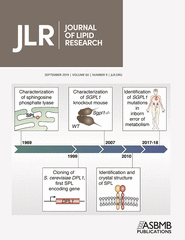
de Boer JF, Verkade E, Mulder NL, de Vries HD, Huijkman NC, Koehorst M, Boer T, Wolters JC, Bloks VW, van de Sluis B, Kuipers F. A Human-like Bile Acid Pool Induced by Deletion of Cyp2c70 Modulates Effects of Farnesoid X Receptor Activation in Mice. J Lipid Res. 2019 Sep 10. pii: jlr.RA119000243. doi: 10.1194/jlr.RA119000243 [PubMed]
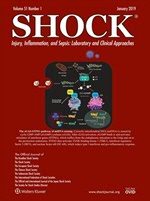
Jongman RM, Zwiers PJ, van de Sluis B, van der Laan M, Moser J, Zijlstra JG, Dekker D, Huijkman N, Moorlag HE, Popa ER, Molema G, van Meurs M. Partial Deletion of Tie2 Affects Microvascular Endothelial Responses to Critical Illness in a Vascular Bed and Organ-Specific Way. Shock. 2018 Jul 30. doi: 10.1097/SHK.0000000000001226. [PubMed]

Fedoseienko A, Wijers M, Wolters JC, Dekker D, Smit M, Huijkman N, Kloosterhuis N, Klug H, Schepers A, Willems van Dijk K, Levels JH, Billadeau DD, Hofker MH, van Deursen J, Westerterp M, Burstein E, Kuivenhoven JA, van de Sluis B. COMMD Family Regulates Plasma LDL Levels and Attenuates Atherosclerosis Through Stabilizing the CCC Complex in Endosomal LDLR Trafficking. Circ Res. 2018 Mar 15. pii: CIRCRESAHA.117.312004. doi: 10.1161/CIRCRESAHA.117.312004. [PubMed]

de Boer JF, Schonewille M, Boesjes M, Wolters H, Bloks VW, Bos T, van Dijk TH,Jurdzinski A, Boverhof R, Wolters JC, Kuivenhoven JA, van Deursen JM, Oude Elferink RPJ, Moschetta A, Kremoser C, Verkade HJ, Kuipers F, Groen AK. Intestinal Farnesoid X Receptor Controls Transintestinal Cholesterol Excretion in Mice. Gastroenterology. 2017 Apr;152(5):1126-1138.e6. doi: 10.1053/j.gastro.2016.12.037. Epub 2017 Jan 5. [PubMed ]
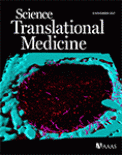
van der Pol A, Gil A, Sillje HHW, Tromp J, Ovchinnikova ES, Vreeswijk-Baudoin I, Hoes M, Domian IJ, van de Sluis B, van Deursen JM, Voors AA, van Veldhuisen DJ, van Gilst WH, Berezikov E, van der Harst P, de Boer RA, Bischoff R, van der Meer P. Accumulation of 5-oxoproline in myocardial dysfunction and the protective effects of OPLAH. Sci Transl Med. 2017 Nov 8;9(415). [PubMed]
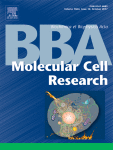
Riedlinger T, Dommerholt MB, Wijshake T, Kruit JK, Huijkman N, Dekker D,Koster M, Kloosterhuis N, Koonen DPY, de Bruin A, Baker D, Hofker MH, van Deursen J, Jonker JW, Schmitz ML, van de Sluis B. NF-kB p65 serine 467 phosphorylation sensitizes mice to weight gain and TNF-a or diet-induced inflammation. Biochim Biophys Acta. 2017 Jul 16. pii: S0167-4889(17)30191-X. [PubMed]
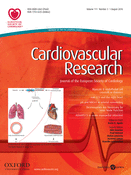
Booij HG., Yu H., de Boer RA., van de Kolk CW., van de Sluis B., van Deursen JM., Van Gilst WH., Silje HH., Westerbrink RD. (2016) Overexpression of A kinase interacting protein 1 attenuates myocardial ischaemia/reperfusion injury but does not influence heart failure development. Cardiovasc. Res., 111, 217-26. [PubMed]

Kakkar V., Månsson C., de Mattos E., Bergink S., van der Zwaag M., van Waarde M.A.W.H., Kloosterhuis N.J., Melki R., van Cruchten R., Al-Karadaghi S., Arosio P., Dobson C.M., Knowles T.P.J., Bates G.P., van Deursen J., Linse S., van de Sluis B., Emanuelsson C., Kampinga H.H. (2016) The S/T-rich motif in the DNAJB6 chaperone delays polyglutamine aggregation and the onset of disease in a mouse model. Molecular Cell . April 12. Pii:S1097(16)00227-6. [PubMed]
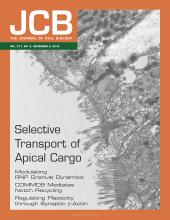
Li H., Koo Y., Mao X., Sifuentes-Dominguez L., Morris L.L., Jia D., Miyata N., Faulkner R.A., van deursen J.M., Vooijs M., Billadeau D.D., van de Sluis B., Cleaver B., Burstein E. (2015) Endosomal sorting of Notch receptors through COMMD9-dependent pathways modulates Notch signalling. J. Cell Biol. 211, 605-17. [PubMed]
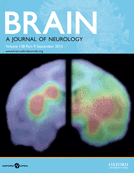
Smeets C.J., Jezierska J., Watanabe H., Duarri A., Fokkens M.R., Meijer M., Zhou Q., Yakovleva T., Boddeke E., den Dunnen W., van Deursen J., Bakalkin G., Kampinga H.H., van de Sluis B., Verbeek (2015) Elevated mutanat dynorphin A cause Purkinje cell loss and motor dysfunction in spinocerebellar ataxia type 23. Brain. 138, 2537-52. [PubMed]
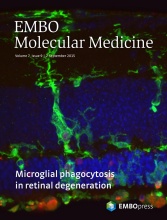
Cannon M.V., Silke H.H., Sijbesma J.W., Vreeswijk-Bausoin I., Ciapaite J., van de Sluis B., van Deursen J., Silva G.J., de Windt L.J., Gustafsson J.A., van der Harst P., van Gilst W.H., de Boer R.A. (2015) Cardiac LXR a protects against pathological cardia hypertrophy and dysfunction by enhancing glucose uptake and utilization. EMBO Mol. Med. 7, 1229-43. [PubMed]
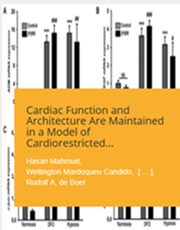
Mahmud H., Candido W.M., van Genne L., Vreeswijk-Baudoin I., Yu H., van de Sluis B., van Deursen J., van Gilst W.H., Silje H.H., de Boer R.A. (2014). Cardiac function and architecture are maintained in a model of cardiorestricted overexpression of the prorenin-renin receptor. PLoS ONE, 25;9:e89929 [PubMed]
At this moment, the following GEMMs are being characterized: 1x conditional knockout models; 1x transgenic models, 2x CRISPR-mediated (conditional) knockout models, 1x CRISPR-mediated knocking model, and >10 CRISPR-mediated somatic genome edited models.
| Last modified: | 15 November 2022 09.53 a.m. |
